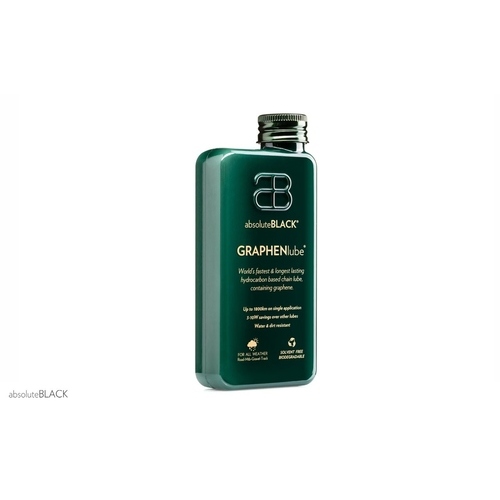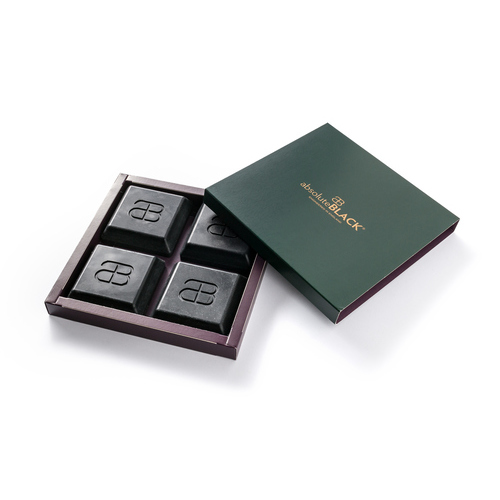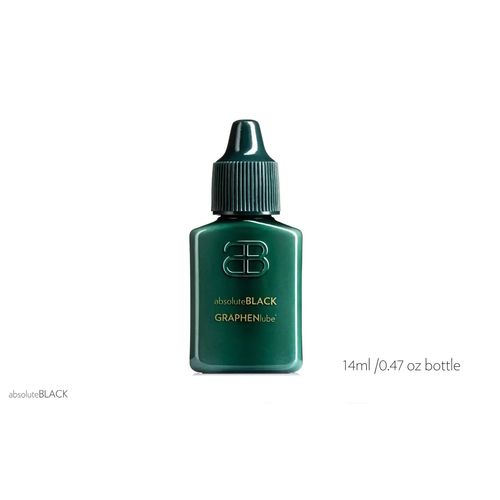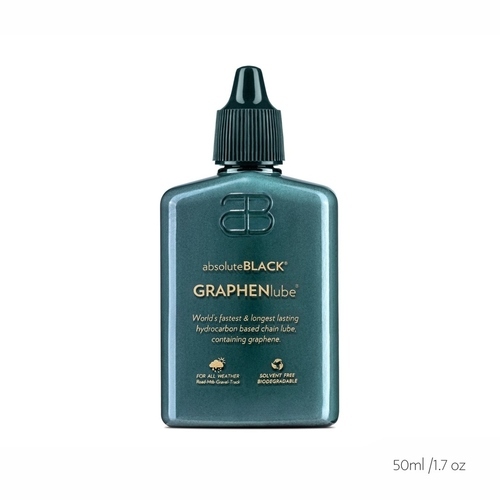
It took us two years to find the right ratio of crumpled to non-crumpled graphene, size of graphene platelets, dispersion rate of agglomerates, concentration and finally figuring out a low friction hydrocarbon emulsion base that will stay on the chain for very long time and not chip away like paraffin wax is known for. The end result is a lubricant that on a single application will hold sub 5 Watts of frictional losses over 900km distance. We have created essentially a new category of performance lubricants.

GRAPHENlube
The product in simple terms it’s a “wax” based water emulsion, with a special mix of high purity graphene, that is liquid when you apply and becomes almost solid when it dries on the chain. Wax based lubricants exhibit far greater tolerance to water and dirt contamination, successfully separating moving chain parts from abrasion and filling in all the imperfections on friction surfaces. Graphene – the wonder material that is still not commonly used because of its incredibly high cost, is a great additive for a few reasons. It has extremely low friction coefficient in all the environments, is far stronger than any known material to a man and it can cling to metal protecting friction surfaces from excessive abrasion. Moreover, it repels the water and is not permeable to air reducing therefore oxidative stress on the metal surface. Even a single atom layer is enough to reduce the friction considerably.

GRAPHENWAX
The product in simple terms, it’s a wax with a specially modified crystalline structure and a mix of additives with high-purity graphene which makes it pliable. Wax-based lubricants exhibit far greater tolerance to water and dirt contamination, successfully separating moving chain parts from abrasion and filling in all the imperfections on friction surfaces. Graphene – the wonder material that is still not commonly used because of its incredibly high cost, is a great additive for a few reasons. It has extremely low friction coefficient in all environments, is far stronger than any known material to a man and it can cling to metal protecting friction surfaces from excessive abrasion. Moreover, it repels the water and is not permeable to air reducing therefore oxidative stress on the metal surface. Even a single atom layer is enough to reduce friction considerably.
 |
||||||||
|
||||||||
 |
||||||||
|
||||||||
 |
||||||||
|
||||||||
 |
||||||||
|
||||||||








